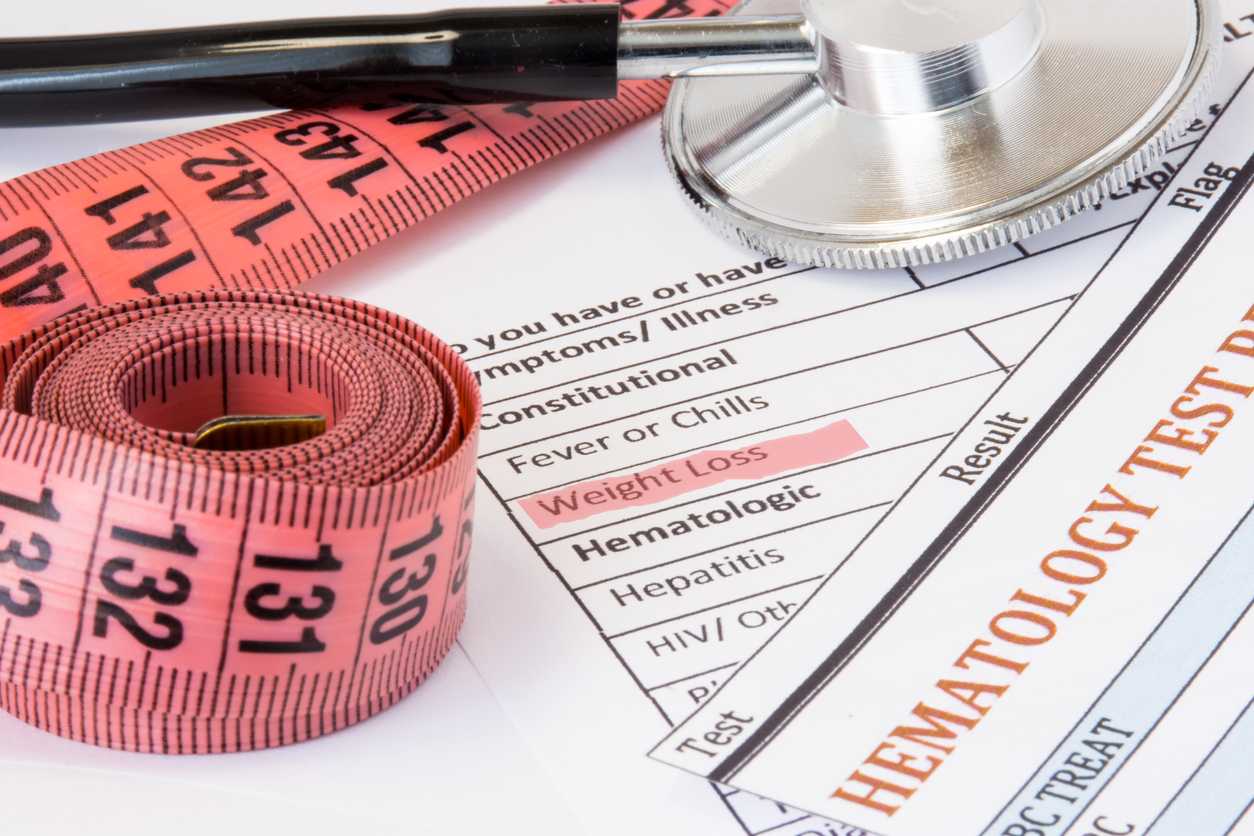Pain
The Difference Between Cachexia, Anorexia, Sarcopenia and Emaciation

Cachexia, anorexia, sarcopenia and emaciation are conditions that are characterized by significant weight loss. However, each has specific characteristics that distinguish them.
Cachexia
Cachexia is the term that describes the end stage of emaciation. It is an involuntary “wasting” disorder that affects individuals in the late stages of a serious disease. A diagnosis of cachexia requires the loss of at least 5% of the body weight in 12 months or less. Additionally, at least three other symptoms must be present, which include the following:
- Fatigue
- Anemia
- Reduced muscle strength
- High levels of inflammation (identified by blood tests)
- Low fat-free mass index
- Low levels of albumin (protein)
Anorexia
Anorexia is different from the eating disorder, anorexia nervosa. It is the medical term for loss of appetite when individuals no longer feel the urge to eat. Anorexia can occur suddenly or gradually over a long period of time. Symptoms include, but are not limited to, the following:
- Fatigue
- Nausea or vomiting
- Muscle weakness
- Constipation or diarrhea
- Changes to skin or nails
Sarcopenia
Sarcopenia is a condition linked with age. It includes the loss of muscle mass and function that people experience, usually beginning in their 30s. An estimated three to five percent of muscle mass can be lost each decade after age 30. This process speed increases from age 65 to 80. Symptoms of sarcopenia include weakness and loss of stamina.
Emaciation
Emaciation describes a severe form of malnutrition. It involves the loss of more than 20 percent of the body weight and most subcutaneous fat and muscle. Those experiencing emaciation have a skeletal appearance, with visible bones underneath the skin. This condition can be the result of various illnesses. Symptoms can include, but are not limited to, the following:
- Dry and thin skin
- Muscle atrophy
- Kidney failure
- Rash
- Diarrhea
- Anemia (low red blood cells)
- Scurvy (vitamin C deficiency)
- Edema (swelling caused by trapped fluid)
- Electrolyte imbalances
Causes
Cachexia occurs as a part of the body’s response to a serious illness. This condition is apparent in the late stages of terminal or otherwise serious diseases, such as HIV or AIDS, chronic obstructive pulmonary disease (COPD), kidney disease, cancer, or congestive heart failure.
Anorexia can result from physical changes to the body, such as pain, dehydration, loss of taste or smell, etc., or from emotional or psychological factors, including anxiety, depression, eating disorder, etc. It may also occur due to medications (e.g., opioids, chemotherapy or antibiotics) or underlying health conditions (e.g., cancer, dementia, diabetes, food poisoning, HIV, AIDS, heart problems, lung issues, and kidney or liver disease).
Sarcopenia can occur with age and is accelerated by inactivity. However, it also occurs in individuals who are active, which suggests that activity levels are not the only factor. Possible other elements include, but are not limited to, the following:
- Decreased ability to turn protein into energy
- Insufficient daily calorie or protein intake required for muscle mass
- Reduced nerve cells used to signal muscles to move
- Lower concentrations of hormones
Emaciation can be caused by a disease or malnutrition. It causes extreme weight loss due to starvation.
Diagnosis
Cachexia is extremely difficult to diagnose, although different tools can be used to aid in the diagnostic process. For individuals with late-stage cancer, a score can be obtained to identify the stage of cachexia. Other tools used for diagnosis include food intake diaries, BMI measurement, lean muscle mass measurement, and blood tests.
Anorexia diagnosis will begin with questions concerning loss of appetite and current diet. It will include the total amount of weight that has been lost, when weight loss started, if weight loss is mild or severe, and if a triggering event has occurred. Tests can include an ultrasound of the abdomen, various blood tests to check function of thyroid, kidney and liver, CT scan of head, neck, chest and pelvis, and X-rays of the esophagus, stomach, and small intestine.
Sarcopenia diagnosing process may involve the use of an MRI or CT scan. Additionally, a DEXA (Dual Energy X-ray Absorptiometry) or BIA (Bioelectrical Impedance Analysis) may be performed. These methods are used to determine the body composition and muscle mass of the individual.
Emaciation is typically diagnosed based on certain criteria that are present.
Treatment
Cachexia treatment largely involves the maintenance of any conditions or problems that may be limiting appetite or contributing to the disorder. This includes nutrition, taste changes, nausea, or vomiting.
Anorexia treatment includes treating the loss of appetite. It may involve eating more frequently, eating higher calorie and higher protein foods, using liquid meal replacements, consuming smoothies or food in different forms, and eating food cold or at room temperature to reduce strong smells or tastes. Managing any underlying conditions is essential. Medication may be prescribed to stimulate the appetite. Extra nutrition may be received via IV.
Sarcopenia treatment includes exercise as the first-line defense. Resistance or strength training helps to build muscle strength and endurance. Certain medications are currently being studied for their use in the treatment of sarcopenia. They include growth hormone supplements, testosterone supplements, urocortin II, and medications used to treat metabolic syndrome.
Emaciation treatment is dependent upon the stage and exact cause of each case.
Additional sources: EatingDisorders.com, Canadian Cancer Society, and ScienceDirect












